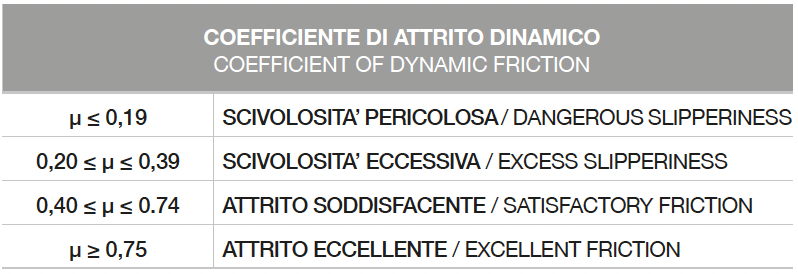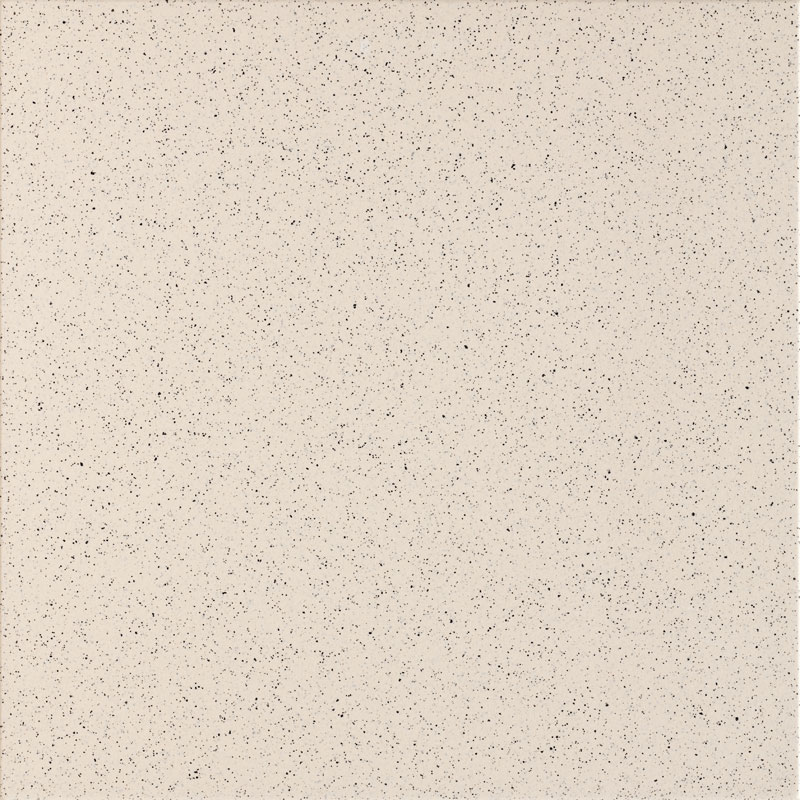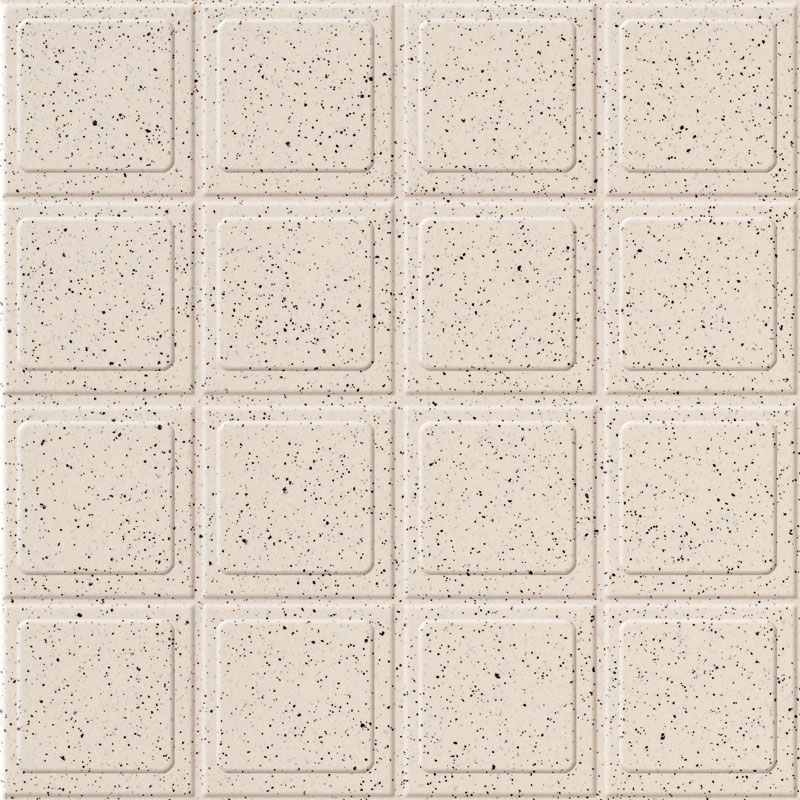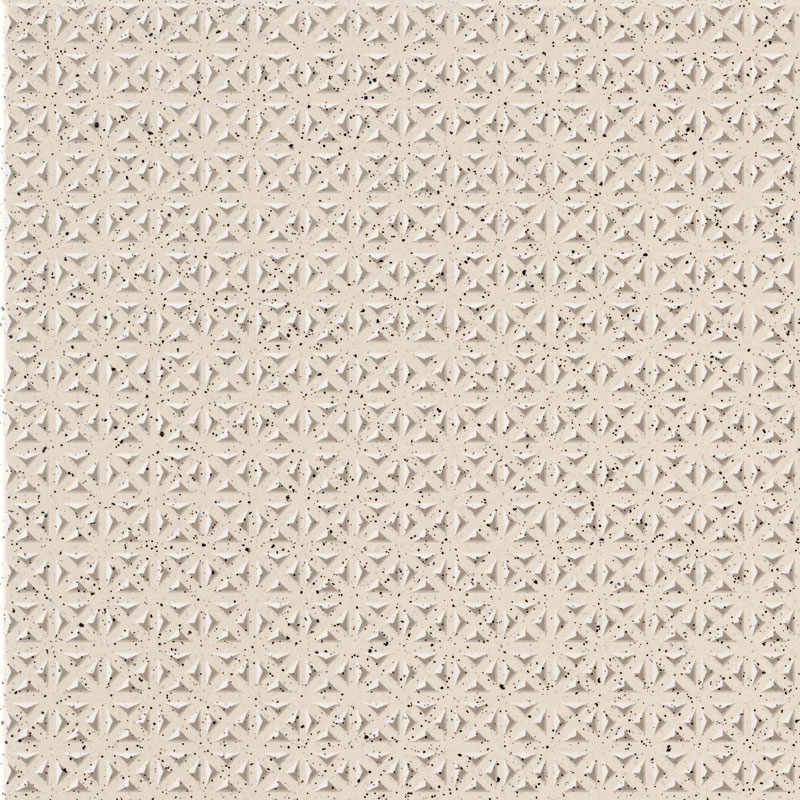TEXTURES
CIPA GRES S.p.A. offers a wide range of surface textures including matt, stone, bush-hammered and polished. This means that all indoor and outdoor environments in both residential business and industrial spheres can be paved and clad. Use of non-slip floor tiles with their textured surfaces are a decisive choice when it comes to eliminating the risk of slipping in certain environments.
ANTISLIP CLASSIFICATIONS
A floor’s slipperiness determines the safety of people walking over it and is therefore an essential requirement in a floor. The slipperiness coefficient, represented by the value “R”, refers to a method foreseen by DIN EN 16165: 2021 Annex B, which classifies products according on the basis of their friction coefficient in response to the specific requirements of a given environment. Depending on the degree of slipperiness, which may be linked with use of particular substances in workplaces or to the presence of water, it is obligatory under these regulations to use a flooring material which will generate considerable friction between the surfaces in contact and thereby make the floor less dangerous for people. The higher the friction coefficient, the less slippery the floor. The standards distinguish between the slipperiness of floor surfaces in areas where people walk with their shoes on (R9-R13) and with bare feet (A,B,C).In the presence of water, where people walk barefoot, the flooring is subject to even more restrictive requirements. These may be measured on the basis of DIN EN 16165:2021 Annex A standard and classified into assessment groups A, B and C with increasing values.

(DCOF) ANSI A.326.3:2021 BOT-3000E
BOT-3000E is a device able to determine static (SCOF) and dynamic (DCOF) coefficient of friction of a wet or dry surface. The measurement is made using a series of interchangeable test sliders (Neolite, SBR, Four S, TRL, leather).


BS EN 16165: 2021 Annex C (british)
Slip potential classification, based on pendulum method BS EN 16165: 2021 Annex c vaules (PTV). Values operative conditions dry and wet: Test temperature: 20°C - Type of used slider material: TRL rubber

AS 4586: 2013 (australian)
ANNEX A: The wet pendulum test for measuring slip resistance (AS 4586 Annex A) is generally performed using a pendulum test instrument. The pendulum device is portable and consists of a weighted foot and a test slider swinging downwards and flowing on a wet surface with water. The foot includes a spring-loaded rubber slider which exerts a predetermined force on the sample as it slides onto the surface. The test results are expressed as British Pendulum Number (BPN) and classified according to AS 4586, as shown in the following table:
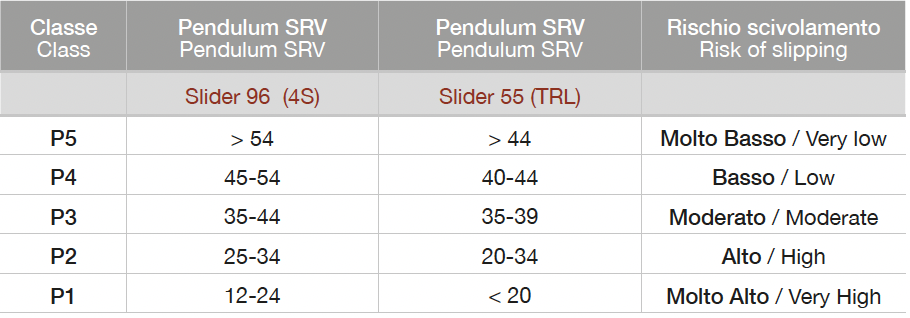
PENDUL0 UNE EN 16165:2022 Annex C (spanish)
Pendulum test according to the UNE EN 16165:2022 Annex C standard
CLASSIFICATION OF FLOORS:

Determination of the coefficient “V”
Volume of water determined by the reliefs of the surface

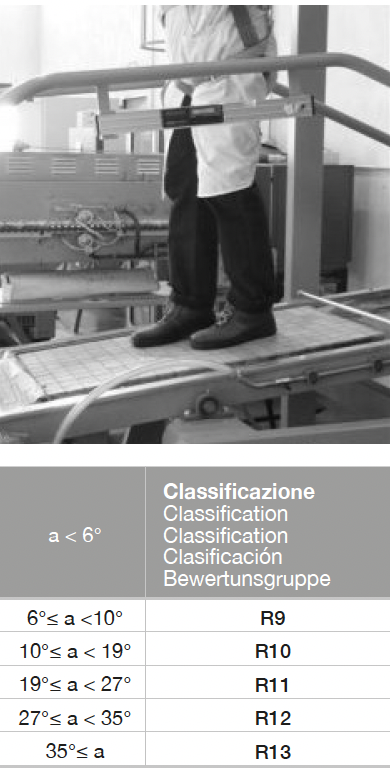

In this test, an operator stands on a horizontal tiled surface that has been oiled. The operator, wearing special footwear, remains on the surface while it is being tilted until he begins to slip. The R classification coefficient assigned depends on the angle of tilt at which the person loses their grip, from R9 (the most slippery) to R13 (the least slippery).


This process is used to determine if tiles are suitable for use in areas where people will walk barefoot. The tiles are fitted on a horizontal surface and are wet with a water and soap solution,and an operative stands barefoot on the surface, which is then tilted until the operative starts to slip. The A+B+C classification coefficient assigned depends on the angle of tilt at which the person loses their grip.

BCRA
The BCRA method measures the coefficient of dynamic friction (μ) that a surface must meet in order to be classified as anti-slip (μ must be ≥ 0.40 both for the slipping element made of leather on dry surfaces and for slipping elements made of hard rubber on wet surfaces):